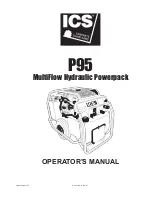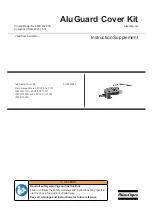
44
| English
down
(36)
on the remote control and the buttons ▲
(4)
and
▼
(3)
on the measuring tool.
Manual operation in the horizontal position
To switch off automatic levelling, press the
manual operation button
(13)
until the re-
quired settings combination for both axes is
achieved. In the illustrated example, auto-
matic levelling for the X-axis is switched off
and the Y-axis continues to be levelled.
To tilt an axis
with automatic levelling
switched off
, press the slope button
(14)
while the menu for manual operating
mode is displayed.
If automatic levelling is only switched off for one axis, it will
only be possible to change the slope of that axis. When
manually operating both axes, it is possible to switch
between the axes by pressing the slope button
(14)
again.
The symbol for the axis whose slope can be changed will
flash.
Tilt the selected axis using the ▲
(4)
or ▼
(3)
buttons until
the required position is reached.
Manual operation in the vertical position
To switch off automatic levelling for the X-
axis, press the manual operation button
(13)
once. (The Y‑axis cannot be levelled when in
the vertical position.)
To tilt the X-axis without using automatic lev-
elling, press the slope button
(14)
while the
manual operating mode menu is dis-
played.
The symbol for the X-axis will flash
on the display.
Tilt the X-axis using the ▲
(4)
or ▼
(3)
buttons until the re-
quired position is reached.
To rotate the Y-axis, press the slope but-
ton
(14)
again
while manual operating
mode menu is displayed.
The symbol for
the Y-axis will flash on the display.
Rotate the Y-axis using the ▲
(4)
or ▼
(3)
buttons until the
required position is reached.
Accuracy Check of the Measuring Tool
The following tasks should be performed only by well-trained
and qualified persons. The legalities with regard to perform-
ing an accuracy check or calibration of a measuring tool must
be known.
Influences on Accuracy
The largest influence is exerted by the ambient temperature.
In particular, temperature differences that occur from the
ground upwards can refract the laser beam.
Since the temperature stratification is greatest at ground
level, you should always mount the measuring tool on a tri-
pod for measuring distances of 20 m or more. In addition,
position the measuring tool in the centre of the work surface,
wherever this is possible.
The deviations have an impact on measuring distances of ap-
prox. 20 m or more, and at 100 m the deviation can easily
be two to four times larger than that at 20 m.
In addition to external influences, device-specific influences
(e.g. falls or heavy impacts) can also lead to deviations. For
this reason, check the levelling accuracy each time before
beginning work.
If the measuring tool exceeds the maximum deviation for the
measuring procedures described below, perform a calibra-
tion (see "Calibrating the measuring tool", page 45) or have
the measuring tool checked by a
Bosch
customer service
agent.
Checking the levelling accuracy in a horizontal position
For a reliable and precise result, it is recommended that you
check there is a free measuring distance of
30
m on firm
ground in front of a wall. Carry out a complete measuring
procedure for each of the two axes.
– Mount the measuring tool in a horizontal position
30
m
from the wall on a tripod, or place it on a firm, level sur-
face. Switch on the measuring tool.
30 m
– Once levelling is complete, mark the centre of the laser
beam on the wall (point
Ⅰ
).
180°
d
– Rotate the measuring tool 180° without changing its posi-
tion. Allow it to level in and mark the centre point of the
laser beam on the wall (point
Ⅱ
). Note that point
Ⅱ
should
preferably be positioned vertically above or below point
Ⅰ
.
The discrepancy
d
between the two marked points
Ⅰ
and
Ⅱ
on the wall reveals the actual height deviation of the measur-
ing tool for the axis being measured.
Repeat the measuring process for the other axis. To do this,
turn the measuring tool through 90° before beginning the
measurement.
1 609 92A 55C | (05.11.2019)
Bosch Power Tools
















































